Peter Fischli
12 Sep - 29 Nov 2020
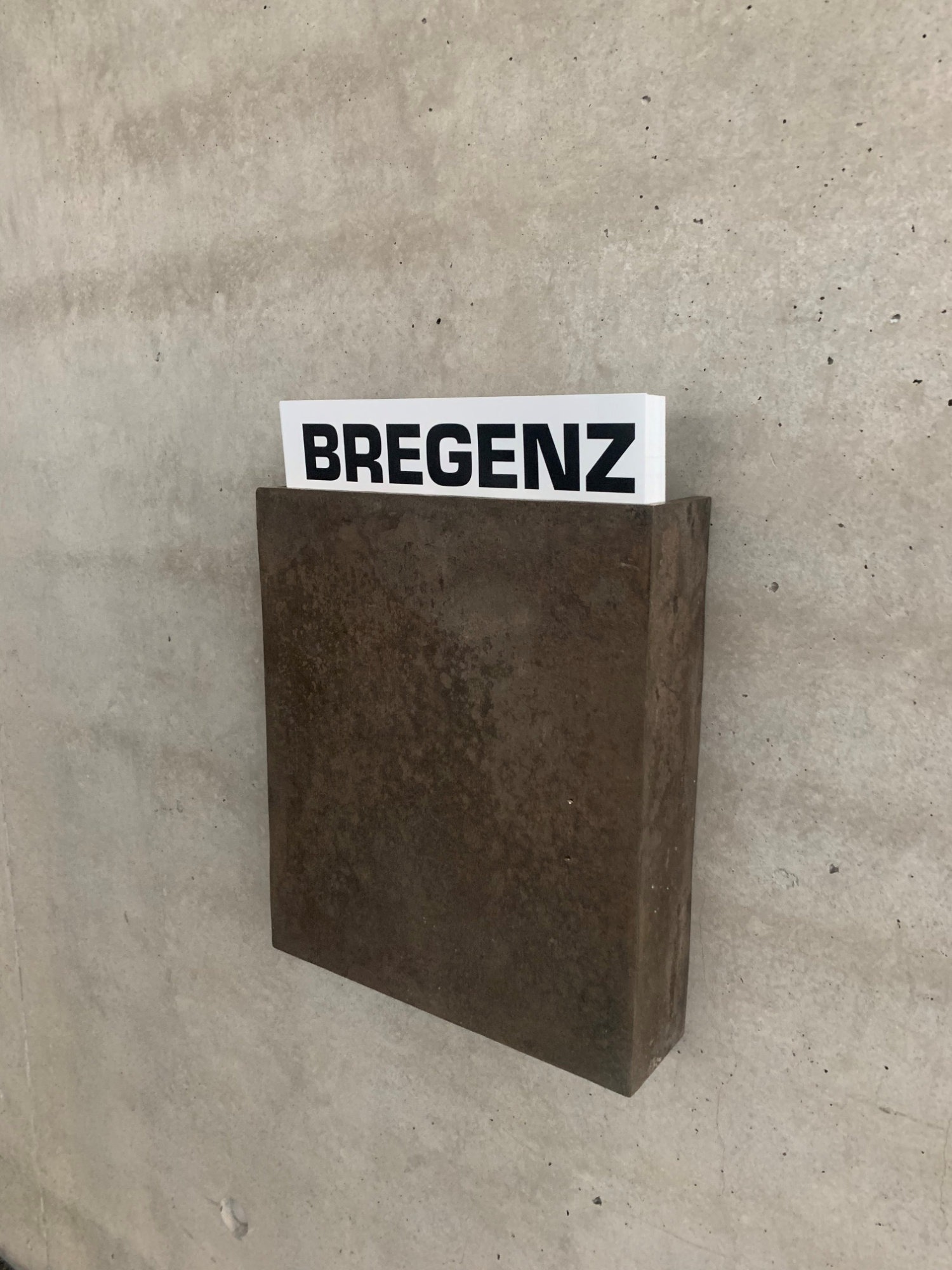
Peter Fischli, exhibition view, ground floor, Kunsthaus Bregenz, 2020. Photo: Markus Tretter. Courtesy of the artist © Peter Fischli, Kunsthaus Bregenz
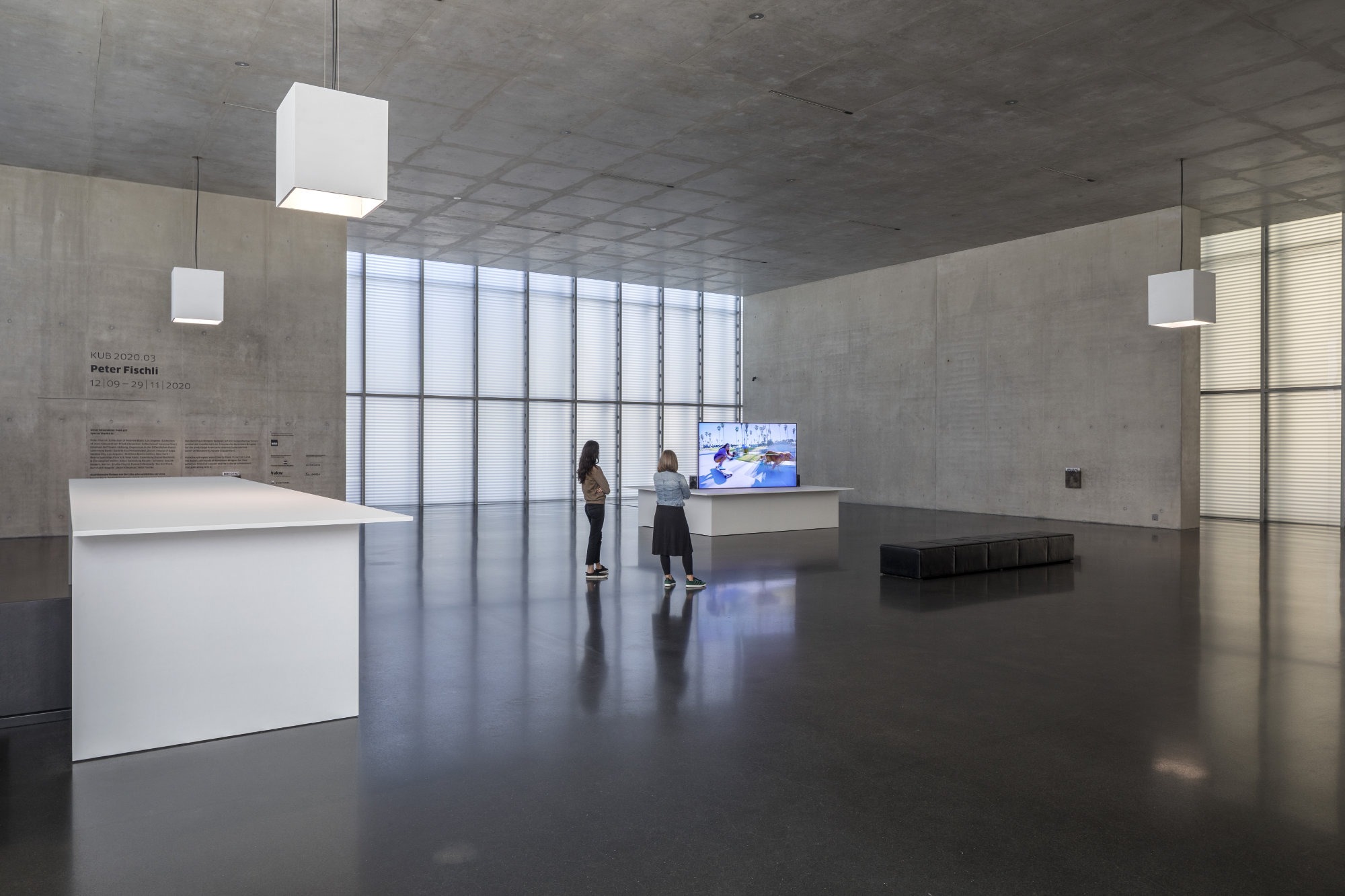
Peter Fischli, Work, Summer 2018, 2018. Exhibition view, ground floor, Kunsthaus Bregenz, 2020. Photo: Markus Tretter. Courtesy of the artist © Peter Fischli, Kunsthaus Bregenz

Peter Fischli, Work, Summer 2018, 2018. Exhibition view, ground floor, Kunsthaus Bregenz, 2020. Photo: Markus Tretter. Courtesy of the artist © Peter Fischli, Kunsthaus Bregenz
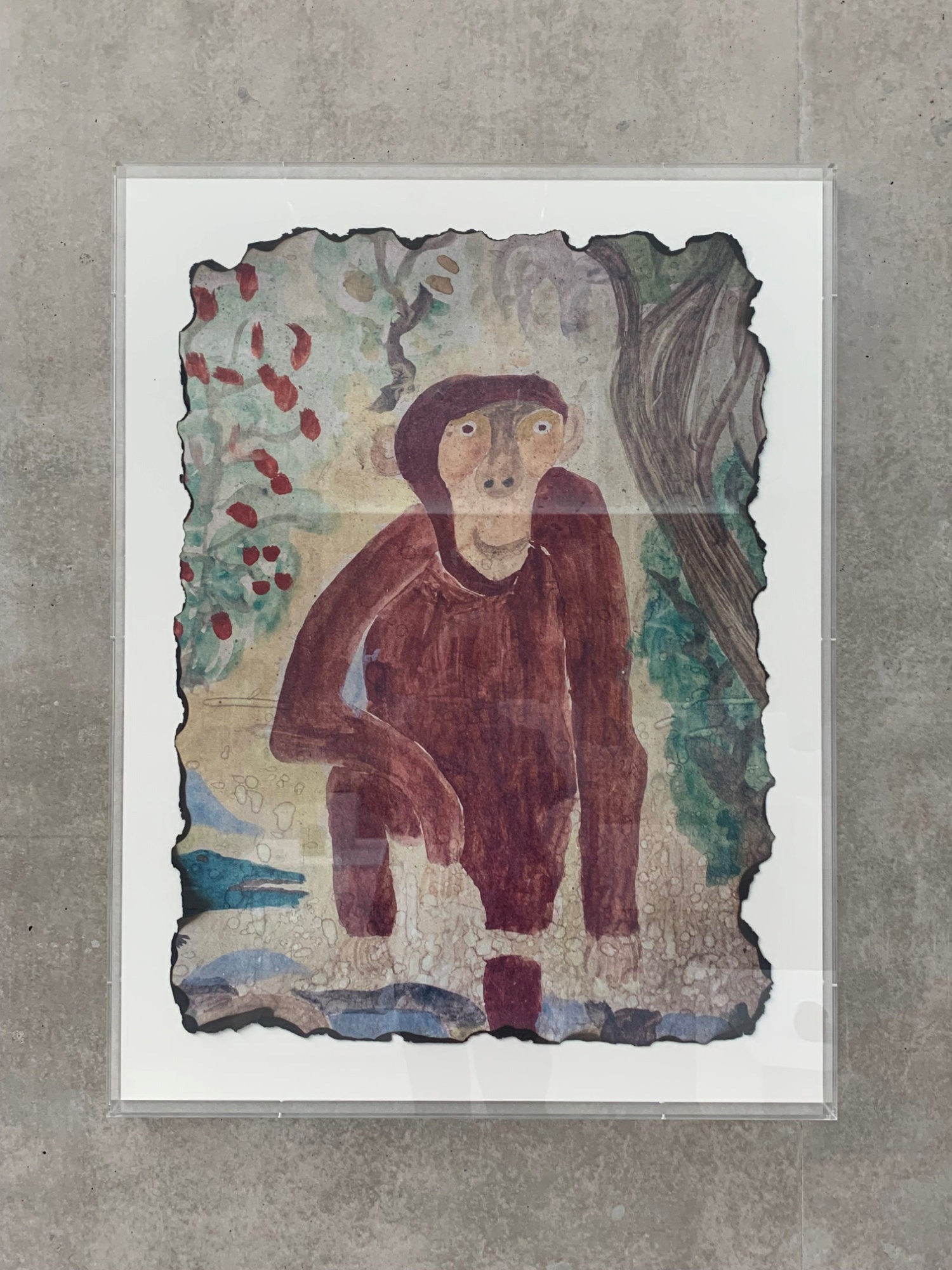
Peter Fischli, Professoren-Edition (The Phantom of the Authentic), 2017. Exhibition view, first floor, Kunsthaus Bregenz, 2020. Photo: Markus Tretter. Courtesy of the artist © Peter Fischli, Kunsthaus Bregenz
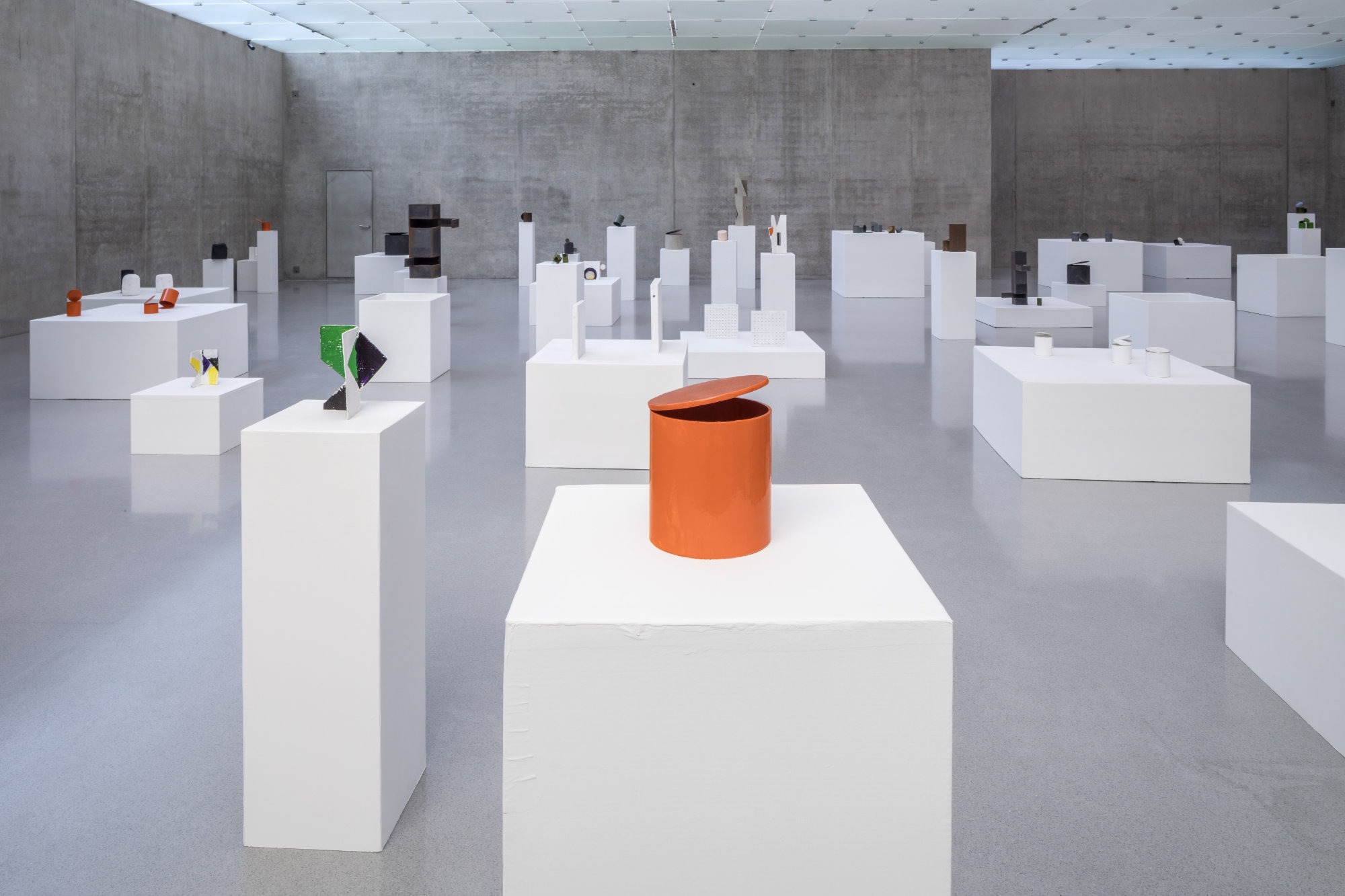
Peter Fischli, Cans, Bags & Boxes, 2017–2019. Exhibition view, first floor, Kunsthaus Bregenz, 2020. Photo: Markus Tretter. Courtesy of the artist © Peter Fischli, Kunsthaus Bregenz
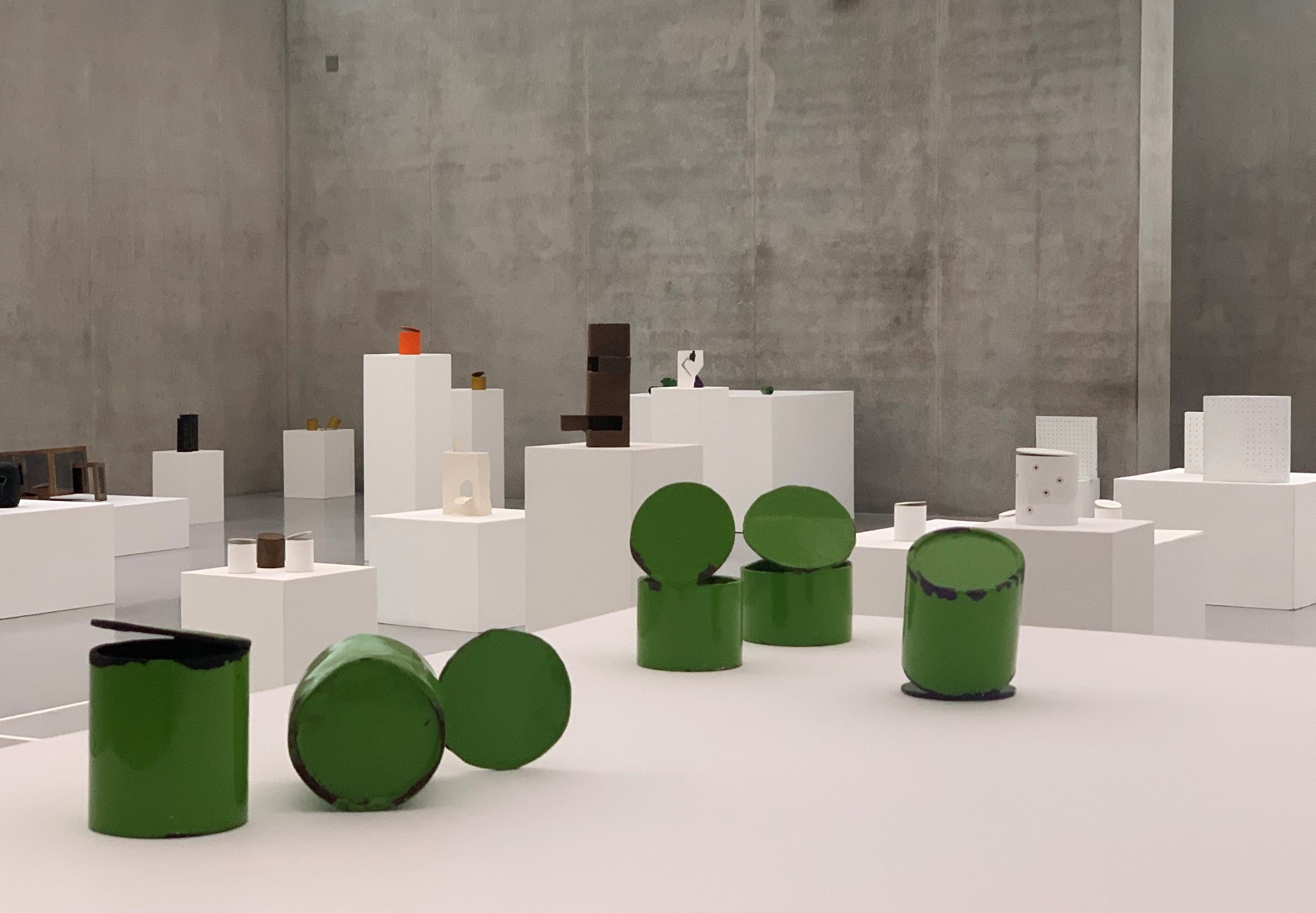
Peter Fischli, Cans, Bags & Boxes, 2017–2019. Exhibition view, first floor, Kunsthaus Bregenz, 2020. Photo: Markus Tretter. Courtesy of the artist © Peter Fischli, Kunsthaus Bregenz

Peter Fischli, Cans, Bags & Boxes, 2017–2019. Exhibition view, first floor, Kunsthaus Bregenz, 2020. Photo: Markus Tretter. Courtesy of the artist © Peter Fischli, Kunsthaus Bregenz

Peter Fischli, Cans, Bags & Boxes, 2017–2019. Exhibition view, first floor, Kunsthaus Bregenz, 2020. Photo: Markus Tretter. Courtesy of the artist © Peter Fischli, Kunsthaus Bregenz
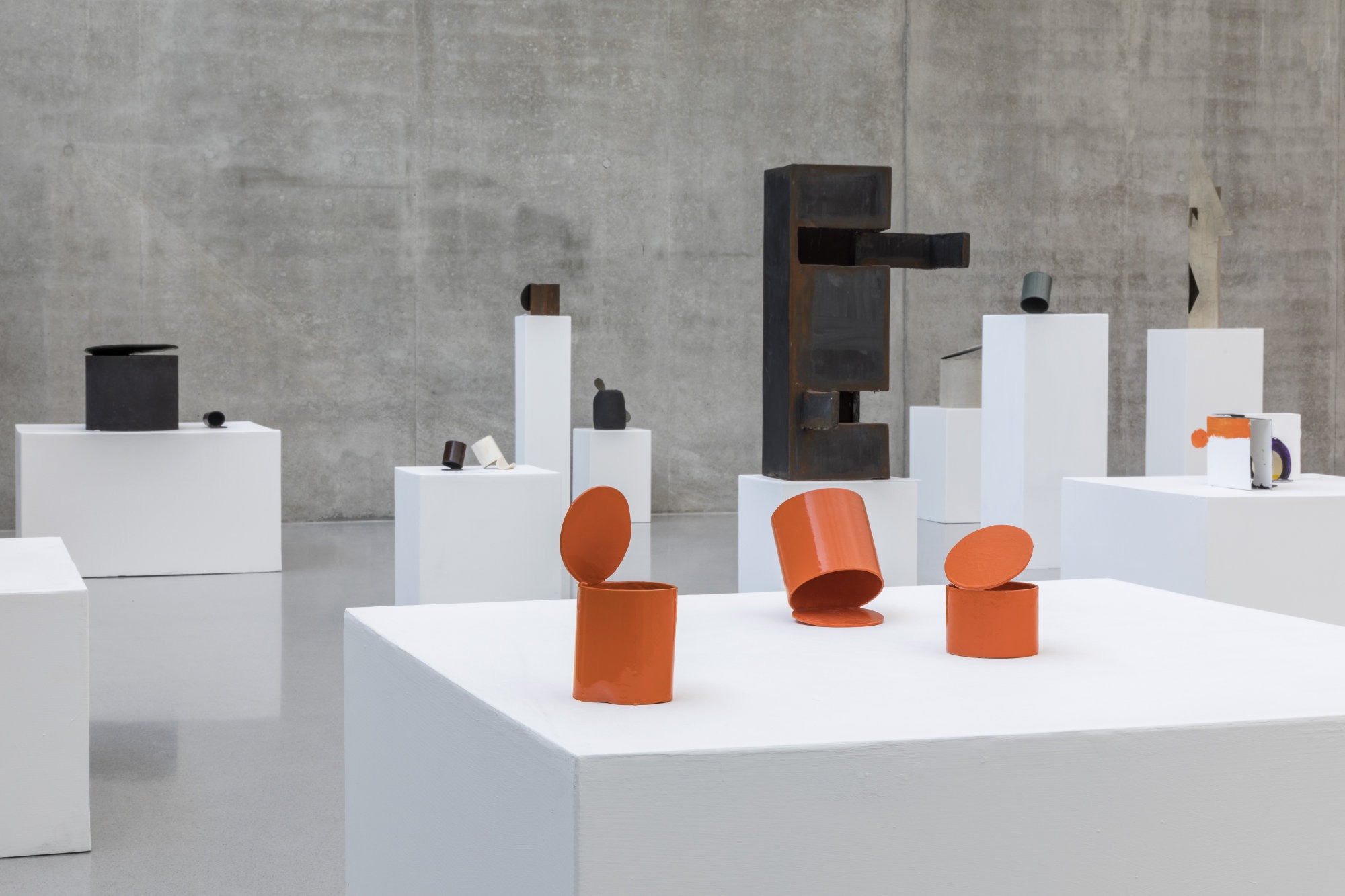
Peter Fischli, Cans, Bags & Boxes, 2017–2019. Exhibition view, first floor, Kunsthaus Bregenz, 2020. Photo: Markus Tretter. Courtesy of the artist © Peter Fischli, Kunsthaus Bregenz
PETER FISCHLI
12 September – 29 November 2020
Peter Fischli begins with a paradoxical intervention. Black furniture is usually to be found in the KUB lobby. Fischli has covered the elegant surfaces that Peter Zumthor designed using precious birds-eye maple with whitewashed particle board constructions, for his solo exhibition at Kunsthaus Bregenz. “It’s literally a re-construction,” states Fischli. The interior of the lobby has been embellished, the distinctive refined by the cheap.
Holders hang on the wall on all the floors, containing a leaflet designed by Fischli. Such fixtures would usually be made of wood or plastic, but Fischli has cast them in bronze. He is, once again, provoking a reversal in hierarchy – albeit, this time, in the opposite direction. These objects have been upgraded, from simple exhibition fixtures to elaborate unique pieces, that is, works of art. The invitation card features an image of the Solomon R. Guggenheim Museum in Bilbao. The reproduction is a low resolution one, obviously downloaded from the Internet and apparently clumsily positioned towards the upper margin. “BREGENZ” is inscribed above it, as if someone had mistaken Bregenz for Bilbao. An additional aspect is the commercial factor. Cultural institutions play an increasingly important role in city marketing: the concept, representation, and production of the so-called “unique selling point” of a locality, but also the deconstruction of such concepts become similarly highlighted. The poster for the exhibition likewise employs a comparable strategy that confuses the identity of a place.
A video is being screened on the ground floor. In Work, Summer, 2018, Fischli is showing clips from GoPro videos. GoPro cameras are small camcorders that are mounted on helmets. The action and sports footage captured with these devices is colorful and youthful, displaying an abundance of oblique angles, and frenzied movement. Enthusiasts can be seen on skis and skateboards, during underwater dives, on motorcycles, or bravely flying through the sky. It is a world in which the sun is always shining, accompanied by an ever-present lust for life and exhilaration. The spectacular experiences are a kind of aesthetic imperative, the enjoyable leisure time that they promise being synonymous with the effort of competing with this exhilarating visual world.
On the first floor there is collection of sculptures on white plinths, consisting of cans, bags, and boxes, the packaging industry’s three basic categories. Most are painted, while some are trimmed, appearing as if modernist works of art. “Originally created for an exhibition in Los Angeles, they are reminiscent of the production of mock-ups for the film industry. They could be regarded as either mock-ups on the way to becoming real sculptures or vice versa,” says Fischli.
He casually places his upper arm on his thigh. The monkey, first modeled in clay and then cast in construction foam in a negative mold, is one of many.
On the second floor there are 24 variations of the monkey. The reliefs, displayed on plinths, form a collection of yellowish sculptures. The original, which Peter Fischli has also developed as a lithograph, is on display on the first floor. The artist painted it when he was ten years old.
Photographs are also being presented on the second floor that include individual images and collages from sources that Fischli created with his cell phone. Traces of foam are visible, together with nocturnal scenes, street lights in the vicinity of the artist’s studio and his apartment, snaps of freeway exits, and views of an industrial zone in the Zurich area. The soapy traces are from shaving foam left by teenagers on cars, traffic signs, and in other public places. It is “micro-vandalism,” according to Fischli, “a trivial blight on public space.”
On the third floor, the bronze boxes no longer function as holders but as wall sculptures. Beside them works on paper are on display that were only created this summer.
Biography
From 1979 onwards Peter Fischli (born 1952 in Zurich, Switzerland) created works, together with his partner David Weiss, who died in 2012, that are regarded as masterpieces of 20th century art. The pair of artists represented Switzerland at the Biennale di Venezia 1995 and in 2003 received the Golden Lion for their presentation Questions (1981–2002). In addition, Fischli/Weiss participated in documenta 8 (1987) and documenta X (1997). In 2016 the Guggenheim Museum, New York, presented the third retrospective Peter Fischli David Weiss: How to Work Better, which was also shown at Museo Jumex in Mexico City. Peter Fischli lives and works in Zurich, his most recent projects include exhibitions in Aspen, Colorado, the Museum of Modern Art in New York, at Reena Spaulings Fine Art, Los Angeles and New York, as well as the House of Gaga, Mexico-City.
12 September – 29 November 2020
Peter Fischli begins with a paradoxical intervention. Black furniture is usually to be found in the KUB lobby. Fischli has covered the elegant surfaces that Peter Zumthor designed using precious birds-eye maple with whitewashed particle board constructions, for his solo exhibition at Kunsthaus Bregenz. “It’s literally a re-construction,” states Fischli. The interior of the lobby has been embellished, the distinctive refined by the cheap.
Holders hang on the wall on all the floors, containing a leaflet designed by Fischli. Such fixtures would usually be made of wood or plastic, but Fischli has cast them in bronze. He is, once again, provoking a reversal in hierarchy – albeit, this time, in the opposite direction. These objects have been upgraded, from simple exhibition fixtures to elaborate unique pieces, that is, works of art. The invitation card features an image of the Solomon R. Guggenheim Museum in Bilbao. The reproduction is a low resolution one, obviously downloaded from the Internet and apparently clumsily positioned towards the upper margin. “BREGENZ” is inscribed above it, as if someone had mistaken Bregenz for Bilbao. An additional aspect is the commercial factor. Cultural institutions play an increasingly important role in city marketing: the concept, representation, and production of the so-called “unique selling point” of a locality, but also the deconstruction of such concepts become similarly highlighted. The poster for the exhibition likewise employs a comparable strategy that confuses the identity of a place.
A video is being screened on the ground floor. In Work, Summer, 2018, Fischli is showing clips from GoPro videos. GoPro cameras are small camcorders that are mounted on helmets. The action and sports footage captured with these devices is colorful and youthful, displaying an abundance of oblique angles, and frenzied movement. Enthusiasts can be seen on skis and skateboards, during underwater dives, on motorcycles, or bravely flying through the sky. It is a world in which the sun is always shining, accompanied by an ever-present lust for life and exhilaration. The spectacular experiences are a kind of aesthetic imperative, the enjoyable leisure time that they promise being synonymous with the effort of competing with this exhilarating visual world.
On the first floor there is collection of sculptures on white plinths, consisting of cans, bags, and boxes, the packaging industry’s three basic categories. Most are painted, while some are trimmed, appearing as if modernist works of art. “Originally created for an exhibition in Los Angeles, they are reminiscent of the production of mock-ups for the film industry. They could be regarded as either mock-ups on the way to becoming real sculptures or vice versa,” says Fischli.
He casually places his upper arm on his thigh. The monkey, first modeled in clay and then cast in construction foam in a negative mold, is one of many.
On the second floor there are 24 variations of the monkey. The reliefs, displayed on plinths, form a collection of yellowish sculptures. The original, which Peter Fischli has also developed as a lithograph, is on display on the first floor. The artist painted it when he was ten years old.
Photographs are also being presented on the second floor that include individual images and collages from sources that Fischli created with his cell phone. Traces of foam are visible, together with nocturnal scenes, street lights in the vicinity of the artist’s studio and his apartment, snaps of freeway exits, and views of an industrial zone in the Zurich area. The soapy traces are from shaving foam left by teenagers on cars, traffic signs, and in other public places. It is “micro-vandalism,” according to Fischli, “a trivial blight on public space.”
On the third floor, the bronze boxes no longer function as holders but as wall sculptures. Beside them works on paper are on display that were only created this summer.
Biography
From 1979 onwards Peter Fischli (born 1952 in Zurich, Switzerland) created works, together with his partner David Weiss, who died in 2012, that are regarded as masterpieces of 20th century art. The pair of artists represented Switzerland at the Biennale di Venezia 1995 and in 2003 received the Golden Lion for their presentation Questions (1981–2002). In addition, Fischli/Weiss participated in documenta 8 (1987) and documenta X (1997). In 2016 the Guggenheim Museum, New York, presented the third retrospective Peter Fischli David Weiss: How to Work Better, which was also shown at Museo Jumex in Mexico City. Peter Fischli lives and works in Zurich, his most recent projects include exhibitions in Aspen, Colorado, the Museum of Modern Art in New York, at Reena Spaulings Fine Art, Los Angeles and New York, as well as the House of Gaga, Mexico-City.

